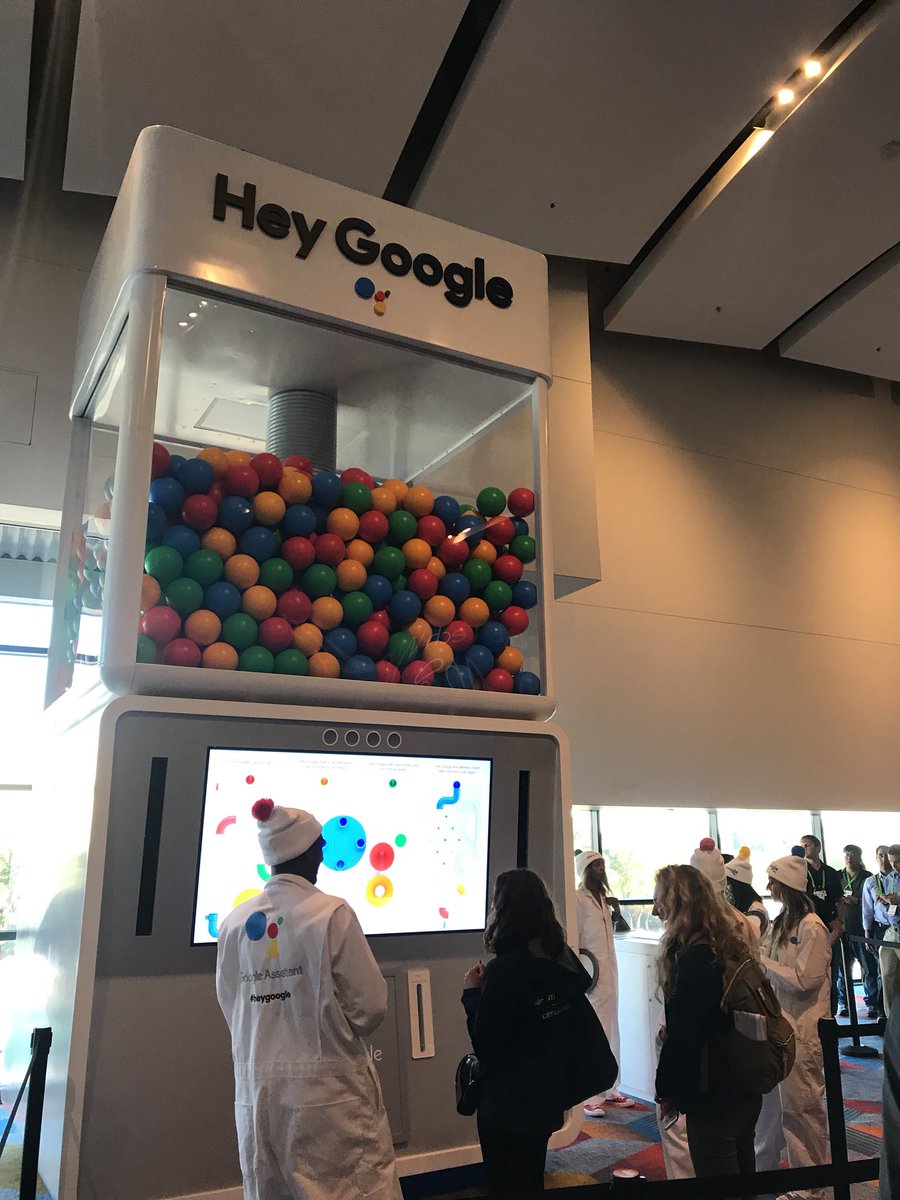The next major evolution in computing is here – voice technology dominates CES.
Voice assistants are here to stay. At the beginning of 2017, half of U.S. broadband households were using a personal assistant through an application or dedicated device. Market leaders such as Amazon, Google, Apple, Microsoft, and more recently Samsung continue to announce new product enhancements and expanded roadmaps.
The competition among these giants was evident at CES with a plethora of voice-enabled devices littered on the showroom floor. While Amazon and Google battled for dominance, this year’s event saw Google make its presence felt with displays that were hard to miss (i.e. the “Hey Google” covered monorails, multi-story outdoor Google playground in Central Plaza of the Las Vegas Convention Center, outdoor billboards along the strip, and the Google Assistant gumball machines that attracted lines of individuals hoping to win a prize).
Google Assistant-enabled devices that were present include:
- Smart displays from JBL, Lenovo, LG, and Sony: As a direct move against the Amazon Echo Show, Google announced integration
 of Google Assistant in four new displays. Given it recently launched Google Home Mini and Max, this gives its hardware partners the ability to do the heavy lifting without having to scramble to make its own smart speaker with a screen – yet. Google can utilize these screens to leverage its video platform, YouTube, a feature it revoked on the Amazon Echo Show.
of Google Assistant in four new displays. Given it recently launched Google Home Mini and Max, this gives its hardware partners the ability to do the heavy lifting without having to scramble to make its own smart speaker with a screen – yet. Google can utilize these screens to leverage its video platform, YouTube, a feature it revoked on the Amazon Echo Show. - Smart TVs: GoogleAssistant will be rolling out in more Android TVs from AirTV Player, Skyworth, Xiaomi, Hair, Westinghouse, and more.
- Third party smart speakers: iHome, which has Alexa smart speaker models, will have Google Assistant models. Bang & Olufsen, JBL, LG, Sonos, and others also have Google Assistant speakers on their roadmap.
Amazon Alexa-enabled devices that were present include:
- First Alert: Onelink Safe and Sound – A smoke/carbon monoxide detector that also functions as a premium speaker (First Alert will also have a Google Assistant model that will look and function exactly like its Alexa-enabled model).
- Kohlr: Announced a line of products that elevate the bathroom experience through vocal commands such as saying “Draw me a bath” – Verdera mirror, Numi toilet, Sensate faucet, and PerfectFill bathtub.
- Appliances from GE, Kenmore, LG, Samsung, June Oven, and Whirlpool: Major kitchen appliances are leveraging new cooking capabilities in the Alexa Smart Home Skill API for hands-free control, enabling commands such as “defrost or microwave X.” Kenmore showcased its washer and dryer with Alexa, allowing consumers to check the status of their laundry cycles.
- Brilliant: A smart light switch with Alexa built in.
- Keecker: A smart, voice-activated robot/projector that is able to move around the home and project multimedia on any wall. Alexa-enablement allows consumers to call on the virtual assistant to move the robot to a specific room and also interfaces with Google Assistant.
The shift from single-assistant devices to multi-assistant compatible devices is emerging. In a move to appeal to a wider array of consumers, manufacturers are looking to enable multiple virtual assistants in a device rather than singling out one specific assistant. Sonos for instance, supports Alexa and will support Google Assistant. Furthermore, smart speakers are aiming to cement their position as the central point of the home by adding an actual hub to the device’s architecture. This not only enables greater utility to the device but also enables wider integration of devices. Hogar Controls’ Milo smart speaker is a great example – it supports protocols ZigBee, Z-Wave, Bluetooth LE, and Wi-Fi, and also has support for Google Assistant.
The rise of multiple assistants calls for a need for seamless interoperability across the assistant ecosystem. According to Parks Associates research, in early 2017 almost 20% of households used more than one voice application. This illustrates the opportunity to facilitate interoperability among multiple assistants.
Nuance understands that consumers may use multiple assistants in their home and announced its cognitive arbitrator solution for assistant interoperability. The solution allows Nuance’s assistant as well as other assistants to interoperate to accomplish a task. The AI-based solution even allows for the system to understand the individuals’ preferences over time, meaning the cognitive arbitrator will call on the assistant that is preferred given the context of the task. It showcased a demo of interoperability between assistants across the smart home as well as from the connected car to the home.
Outside of the voice assistant and smart speaker segment, more and more products are enabling AI-powered solutions. Pocketalk debuted its translation device to the U.S. market at CES. Its small, portable, and pocket-sized device can provide instant translation of over 60 languages. This implementation of artificial intelligence enables two-way dialog for users that may not have had the ability to converse with individuals in their native language before.
Further Reading:


